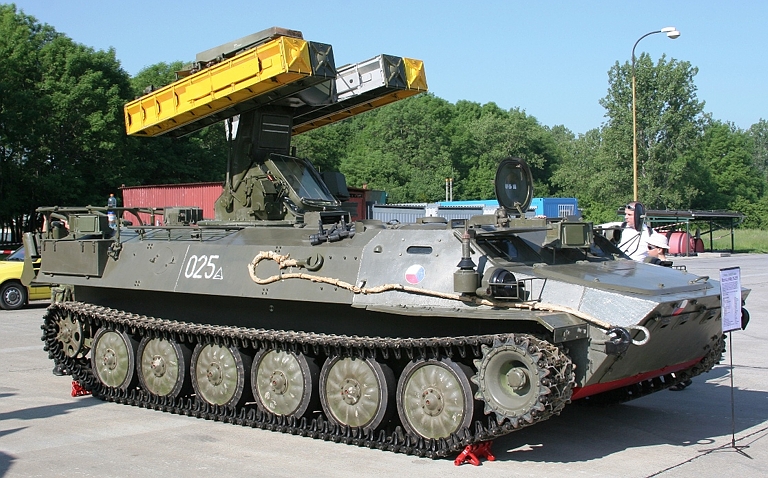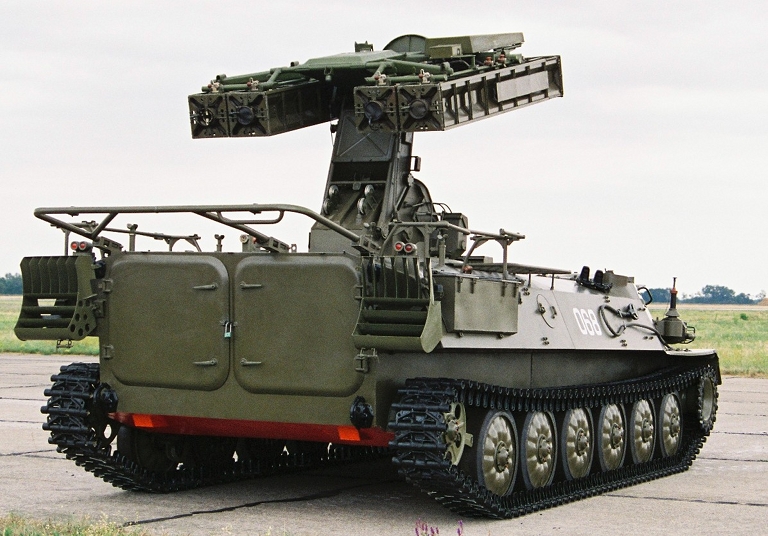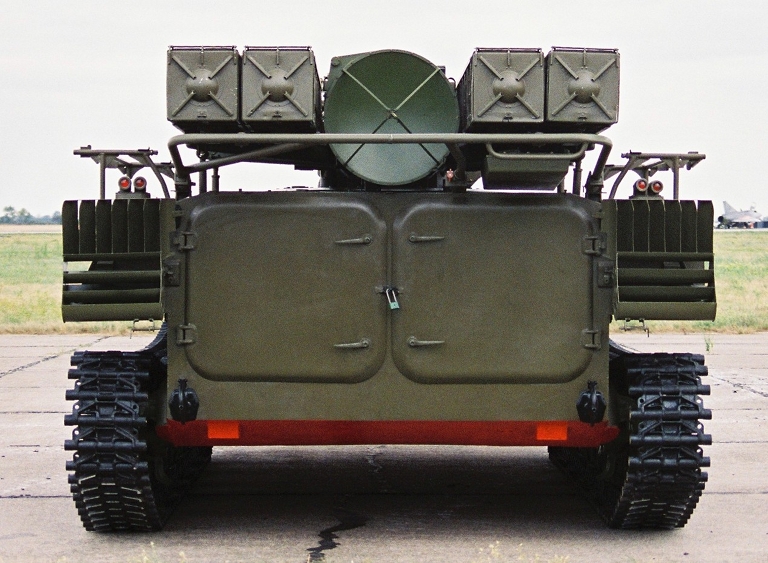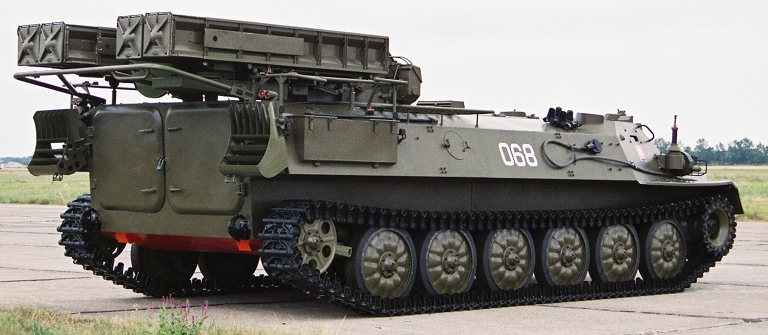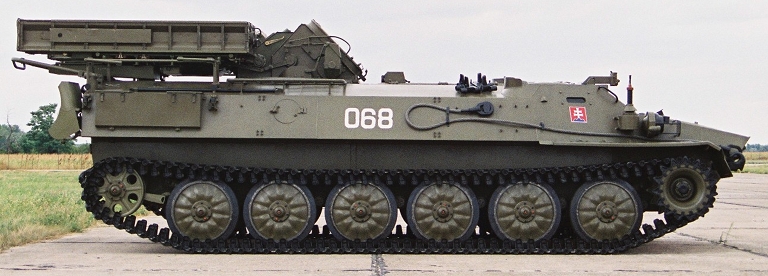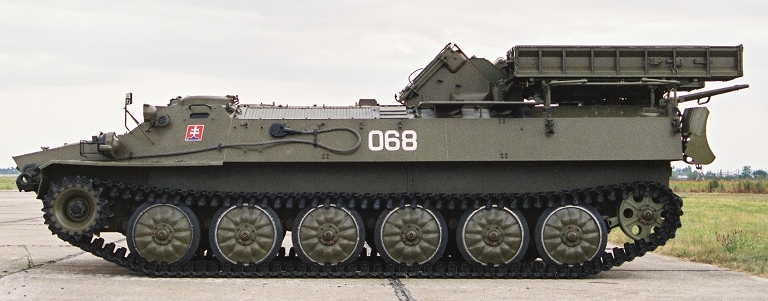|
||||||||||||||||||||||
![Home - Air Power Australia Website [Click for more ...]](APA/APA-Title-Main.png) |
||||||||||||||||||||||
![Sukhoi PAK-FA and Flanker Index Page [Click for more ...]](APA/flanker.png) |
![F-35 Joint Strike Fighter Index Page [Click for more ...]](APA/jsf.png) |
![Weapons Technology Index Page [Click for more ...]](APA/weps.png) |
![News and Media Related Material Index Page [Click for more ...]](APA/media.png) |
|||||||||||||||||||
![Surface to Air Missile Systems / Integrated Air Defence Systems Index Page [Click for more ...]](APA/sams-iads.png) |
![Ballistic Missiles and Missile Defence Page [Click for more ...]](APA/msls-bmd.png) |
![Air Power and National Military Strategy Index Page [Click for more ...]](APA/strategy.png) |
![Military Aviation Historical Topics Index Page [Click for more ...]](APA/history.png)
|
![Intelligence, Surveillance and Reconnaissance and Network Centric Warfare Index Page [Click for more ...]](APA/isr-ncw.png) |
![Information Warfare / Operations and Electronic Warfare Index Page [Click for more ...]](APA/iw.png) |
![Systems and Basic Technology Index Page [Click for more ...]](APA/technology.png) |
![Related Links Index Page [Click for more ...]](APA/links.png) |
|||||||||||||||
![Homepage of Australia's First Online Journal Covering Air Power Issues (ISSN 1832-2433) [Click for more ...]](APA/apa-analyses.png) |
||||||||||||||||||||||
| Last Updated: Mon Jan 27 11:18:09 UTC 2014 | ||||||||||||||||||||||
|
||||||||||||||||||||||
|
KBTochmash
9K35
Strela 10
Self Propelled Air Defence System / SA-13 Gopher Cамоходный Зенитный Ракетный Комплекс КБточмаш 9К35 Стрела-10 Technical Report APA-TR-2009-0801 |
||||||||||||||||||||||||||||||||||||||||||||||||||||||||||||||||||||||||||||||||
| by
Dr
Carlo Kopp, AFAIAA, SMIEEE, PEng August 2009 Updated May, 2011 Updated April, 2012 Text © 2009-2012 Carlo Kopp  |
||||||||||||||||||||||||||||||||||||||||||||||||||||||||||||||||||||||||||||||||
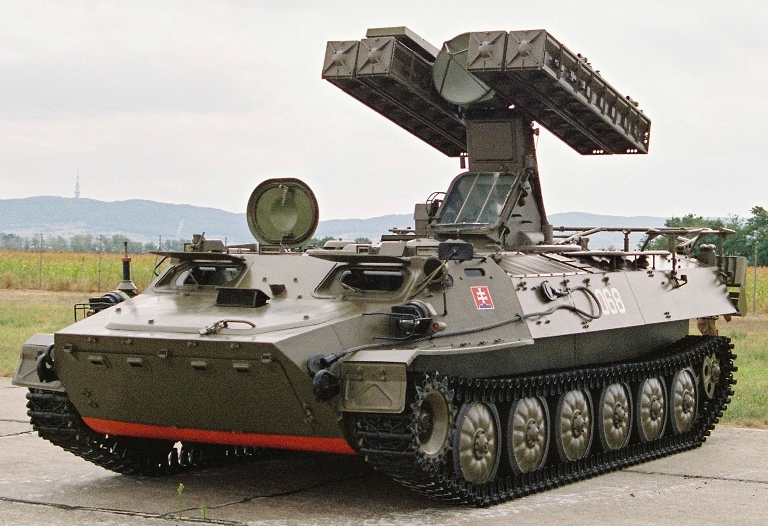 |
||||||||||||||||||||||||||||||||||||||||||||||||||||||||||||||||||||||||||||||||
|
||||||||||||||||||||||||||||||||||||||||||||||||||||||||||||||||||||||||||||||||
BackgroundThe 9K35 Strela 10 / SA-13 Gopher was
developed as a replacement for the 9K31 Strela 1 / SA-9 Gaskin, and was
intended to provide a system with better mobility and a longer ranging
and more lethal missile design. Development was initiated in 1969, in
parallel with the 2K22 Tunguska / SA-19 Grison, the intent being to
provide a complementary system with a btter capability in heavily
jammed environments, where the radar directed SPAAG might be at a
disadvantage. Design requirements included the ability to engage
closing targets with speeds of up to 415 m/s and receding targets at
310 m/s, at altitudes between 25 m and 3,500 m, at ranges between 800
and 5,000 m. A single shot Pk between 0.5 and 0.6 for targets with load
factors between 3 and 5G was envisaged. The system was to be relatively
autonomous capable of providing point defence for maneuvre formations.
The system was to be air transportable by An-12 Cub and Mi-6
helicopter, and able to cross bodies of water.
The Nudelman bureau was tasked with missile design and Geofizika tasked with developing the seeker. IOC was achived in 1976 with Red Army air defence units. The baseline 9M37 Strela-10SV variant fitted with a 9E47 Virazh two colour infrared/visible band seeker deployed on the 9K35 TELAR from 1976. Development of the improved 9K37M Strela-10M with a 9E47M seeker, deployed on the 9A35M TELAR, started in 1977, with IOC in 1979. The third missile variant, the further improved 9K37M2 Strela-10M2 deployed on the 9K35M2 TELAR from 1981. The last Cold War variant was the Strela-10M3 deployed on the 9K35M3 TELAR from 1989, this variant using the 9M333 missile which was supplied with a 9E425 three channel seeker, the first infrared, the second using a visible band television contrast lock design, and the third a passive homing channel intended to home on the emissions from jamming equipment. The 9M333 included a new autopilot and IR background rejection processing, as well as a laser proximity fuse with eight rather than four lobes for engaging small targets,and a larger and more lethal warhead. The 9K35M3 included an improved 9Sh127 optical sighting system for the gunner with WFOV and NFOV modes. 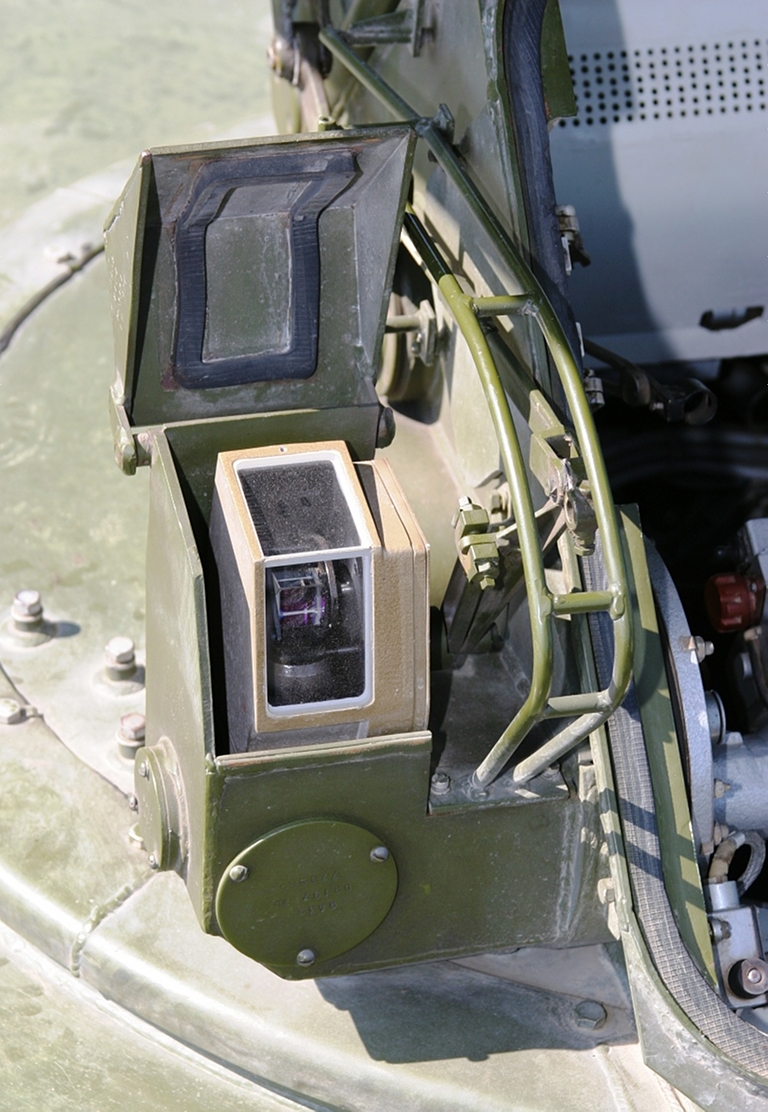 Detail of optical sighting system on a 9A35M Gopher smart TELAR of the Czech Army, deployed for operation. The design uses a folded optical path to a gunner reticle, upon which symbology is optically projected. The symbology is superimposed on the viewed scene and includes outputs from the 9S86M Snap Shot engagement radar (image © Miroslav Gyűrösi). The 9K35 / SA-13 Gopher system employs a coherent pulse Doppler millimetric band 9S86 Snap Shot range and radial velocity finding radar. Two TELARs were developed on the MT-LB tracked chassis, these being the 9A35 TELAR equipped with the 9S16 Flat Box-B radio-frequency passive detection system, and the 9A34 without it. The Flat Box antenna suite comprised multiple antennas on the top of the MT-LB hull and an additional antenna package on the electrically powered TELAR turret. Typically one 9A35 was deployed with three 9A34 TELARs. All TELARs carry four ready rounds and four stowed reloads. The Gryuza variant employs the 9A34A TELAR which is equipped with an Azovsky L-136 MAK-F infrared search and track (IRST) system, intended to cue to gunner to targets. the system is claimed to be capable of passively acquiring an F-15 class target at 10 to 15 km range day or night. This system is detailed under 9K35A Gyurza / SA-13 Gopher SAM System Upgrade. A typical battery deploys with three 9A34 series TELARS, one 9A35 series TELAR, and a single PPRU-1/1M command post, although early variants often used the PU-12M series command post. Typically the PPRU-1 or -1M is equipped with the X-band 9S80/9S80M/M1 Ovod / Dog Ear battery acquisition radar. A digital variant of the this command post, the PPRU-1M-2, has been recently displayed, equipped with an entirely new planar array solid state digital 9S80M1-2 radar. The new 9M35M3-K Kolchan TELAR design is detailed below.  A late model Nudelman 9K37M Gopher missile round. Note the glass seeker aperture and laser proximity fuse windows. Nudelman 9K37 Series Surface to Air MissileThe
missile's Geofizika 9E47M two
colour
all aspect electro-optical seeker occupies the nose section,
with a optical nose window, likely using a sapphire material. The
seeker is cooled using a liquid nitrogen tank, likely using a
Joule-Thompson refrigerator. Geofizika also designed the 36T seeker for
the R-27T/TE / AA-10 Alamo. Aft of the
optics and the canard pitch/yaw control actuator modules is the missile
autopilot module and impact fuse. The 9N125 3 kg combined expanding rod
and fragmentation warhead is integrated with a laser proximity fuse,
with two offset rows of windows for emitter and detector elements. Aft
of the warhead and fuse the missile volume is largely occupied with the
dual pulse solid rocket motor. The small cruciform surfaces on the tail
are used for roll stabilisation. The missiles
are supplied in hermetically sealed launch tubes which double up as
transportation containers.  Launch
of
a 9M37M / SA-13
Gopher SAM (Russian MoD).
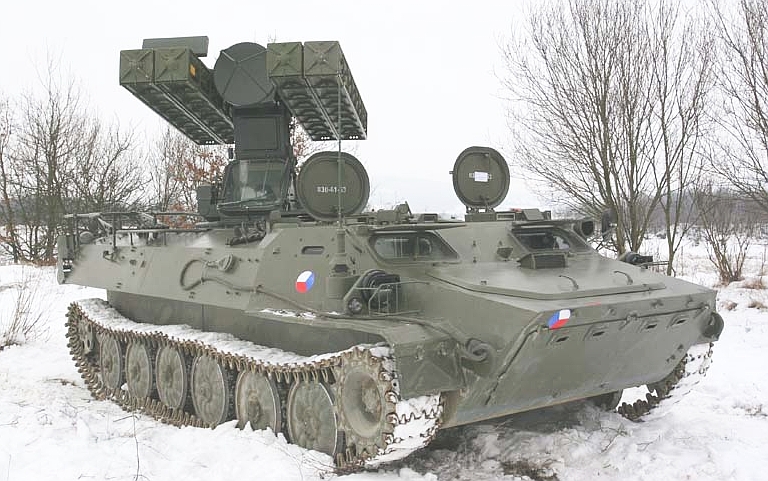 9A34M
/ SA-13 Gopher TELAR of the
Czech Army, which acquired the system during the Cold War. The 9S86
Snap Shot rangefinding radar is located between the launchers (Czech
Army).
 SA-13
Gopher system of the
Czech Army waiting in ambush for an unsuspecting aircraft (Czech Army).
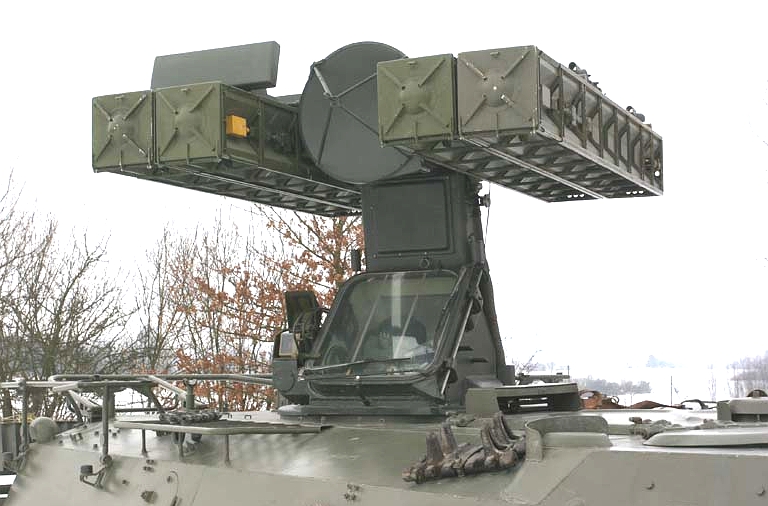
Production and Exports
|
||||||||||||||||||||||||||||||||||||||||||||||||||||||||||||||||||||||||||||||||
9K35 Technical Data
|
||||||||||||||||||||||||||||||||||||||||||||||||||||||||||||||||||||||||||||||||
9K35M Battery Components |
||||||||||||||||||||||||||||||||||||||||||||||||||||||||||||||||||||||||||||||||
|
||||||||||||||||||||||||||||||||||||||||||||||||||||||||||||||||||||||||||||||||
|
|
||||||||||||||||||||||||||||||||||||||||||||||||||||||||||||||||||||||||||||||||
9A35M Transporter Erector
Launcher And Radar
|
||||||||||||||||||||||||||||||||||||||||||||||||||||||||||||||||||||||||||||||||
9A34M Transporter Erector Launcher And Radar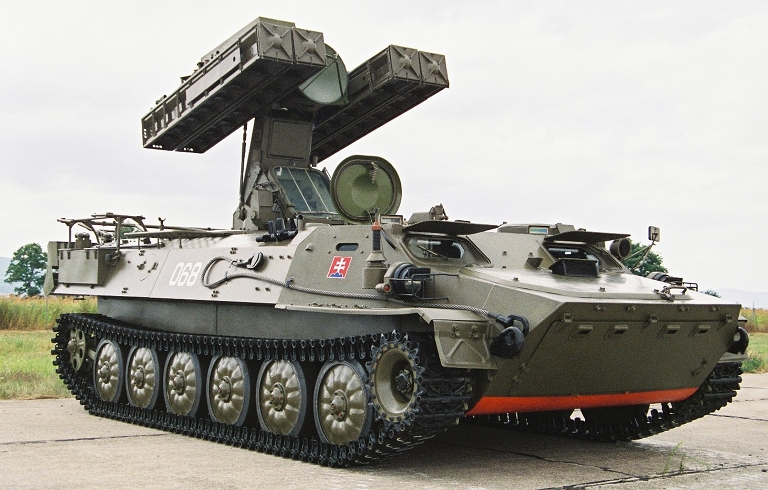 |
||||||||||||||||||||||||||||||||||||||||||||||||||||||||||||||||||||||||||||||||
9T244/245 Transporter/Transloader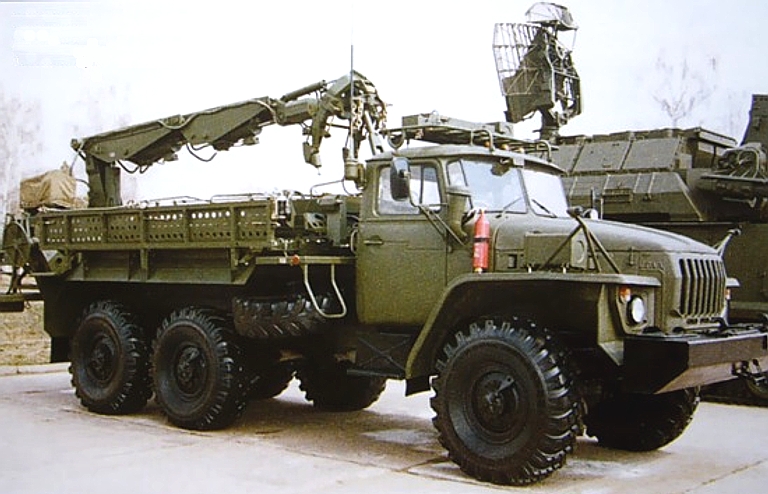 Neither Russian nor former Warpac
references list a specialised transporter/transloader for the 9K35 /
SA-13 Gopher system. Available types include the widely used 9T244 /
9T245 and other Ural 4320 derivatives (Kupol JSC).
|
||||||||||||||||||||||||||||||||||||||||||||||||||||||||||||||||||||||||||||||||
PPRU-1M Battery Mobile Command Post /
Acquisition Radar
|
||||||||||||||||||||||||||||||||||||||||||||||||||||||||||||||||||||||||||||||||
P-40/1S12 Long Track Acquisition Radar The P-40/1S12 Long Track S-band
acquisition radar is often cited as the mobile acquisition component in
Strela 10 SAM batteries, although its primary purpose was supporting
the SA-4 Ganef system. It uses a modified tank chassis to provide high
cross country mobility. The antenna stows flat on the roof of the
vehicle. Eight stacked beams are used for heightfinding.
|
||||||||||||||||||||||||||||||||||||||||||||||||||||||||||||||||||||||||||||||||
P-15 / P-15M / P-19 Flat Face / Squat Eye Acquisition Radar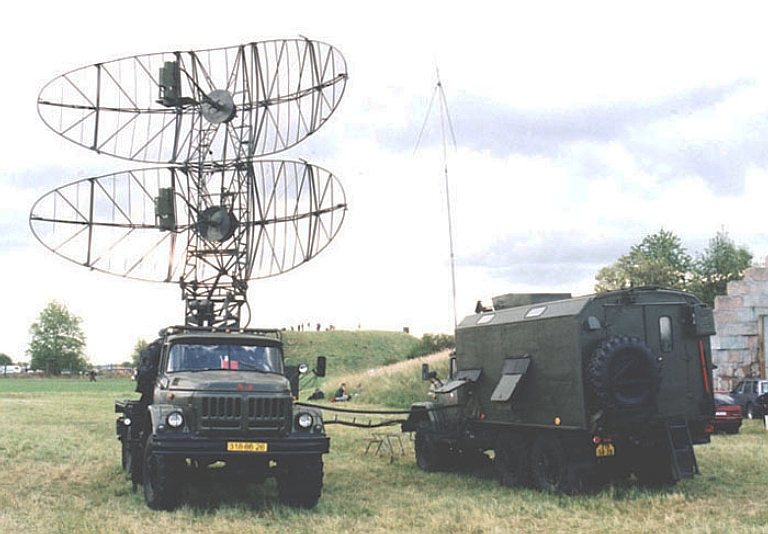 Late model P-19 Flat Face D
acquisition radar. The Flat Face and Squat Eye were frequently used as
acquisition radars for groups of 9K35M / SA-13 Gopher batteries,
especially in export systems.
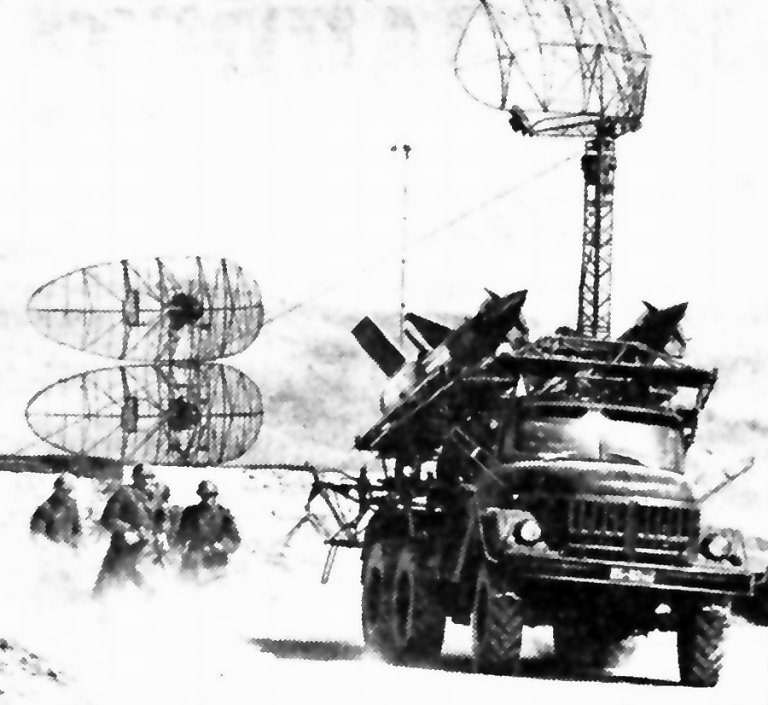 PR-14A , P-15 Flat Face and P-15M Squat
Eye. Note the antenna mast tether on the P-15M (Soviet MoD).
|
||||||||||||||||||||||||||||||||||||||||||||||||||||||||||||||||||||||||||||||||
LEMZ PRV-16/1RL132 Naklon / Thin Skin Heightfinding Radar Upgraded
PRV-16BM.01
self-propelled 6
GHz
band nodding heightfinder
at Milex 2011 (© 2011 Michael Jerdev).
|
||||||||||||||||||||||||||||||||||||||||||||||||||||||||||||||||||||||||||||||||
KBT 9K35M3-K Kolchan / BTR-60/70/80 TELAR
|
||||||||||||||||||||||||||||||||||||||||||||||||||||||||||||||||||||||||||||||||
| BTR-60PB and BTR-60PBM-A1 Comparison |
||
| Variant | BTR-60PB | BTR-60PBM-A1 |
| Combat weight, kg | 10300 | 10250/11250* |
| Overall dimensions: – length – width – height (over turret) |
7220 2825 2310 |
7220 2825 1210/2960* |
| Top speed over highway, at least, km/h | 80 | 90 |
| Top water speed, at least, km/h | 9 | 9 |
| Fuel range, km | 500 | 550 |
| Water endurance, hrs | 11 | 12 |
| Obstacle capabilities: – gradient, deg – trench, m |
30 up to 2 |
30 up to 2 |
| Engine type | 2 × carburetor | 2 × turbocharged diesel |
| Engine power, hp | 2 × 90 | 2 × 110 |
| Source:
http://www.minotor-service.com/en/btr-60pbm-a1-and-btr-70m-a1-apc.html |
||
| BTR-70 and BTR-70M-A1 Comparison |
||
| Variant |
BTR-70 | BTR-70M-A1 |
| Combat weight, kg | 10500 | 11450/12450* |
| Overall dimensions, mm: – length – width – height (over turret) |
7535 2800 2235 |
7535 2800 2235/2885* |
| Top speed over highway, at least, km/h | 80 | 95 |
| Top water speed, at least, km/h | 9 | 9 |
| Fuel range, km | 500 | 550 |
| Water endurance, hrs | 10 | 11 |
| Obstacle capabilities: – gradient, deg. – trench, m |
30 up to 2 |
30 up to 2 |
| Engine type | 2 × carburetor | 2 × turbocharged diesel |
| Engine power, hp | 2 × 120 | 2 × 136 |
| Source: http://www.minotor-service.com/en/btr-60pbm-a1-and-btr-70m-a1-apc.html | ||
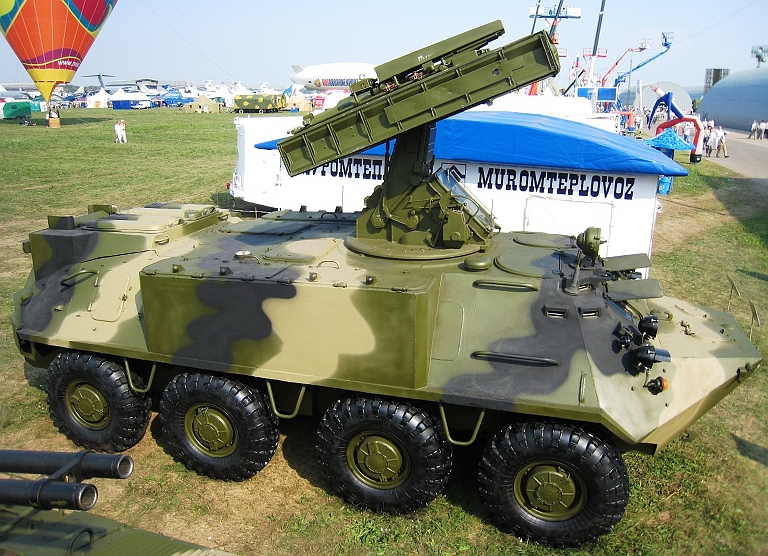
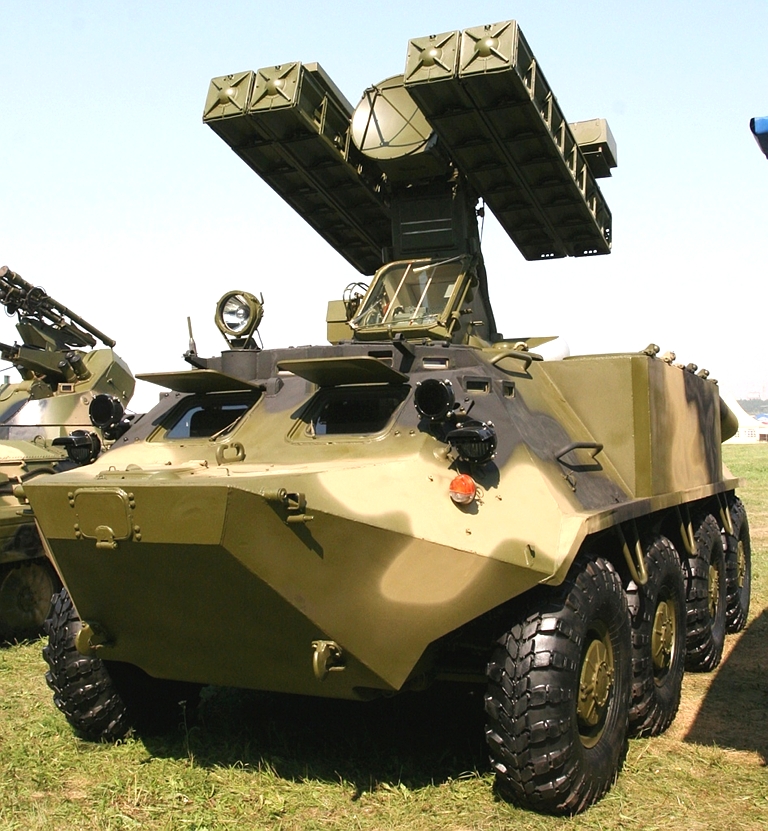
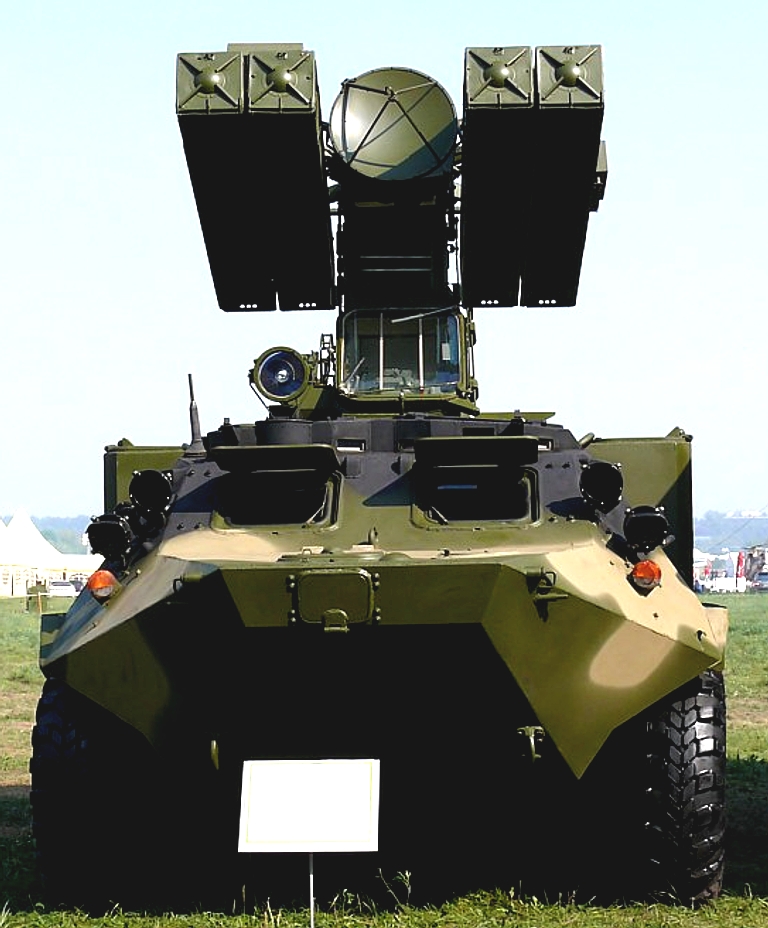
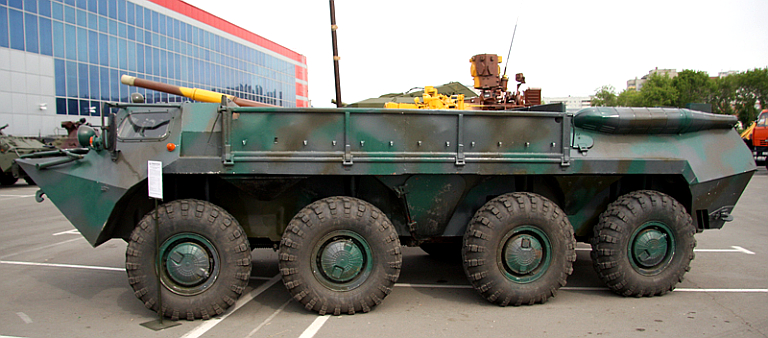
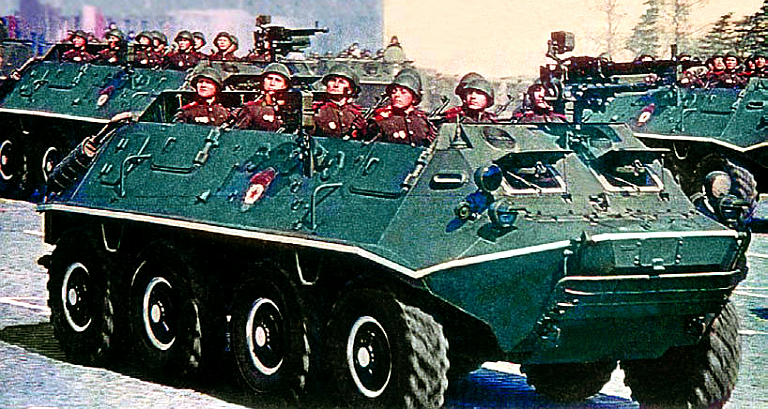
PPRU-1M-2
Battery Command Post /
Acquisition Radar
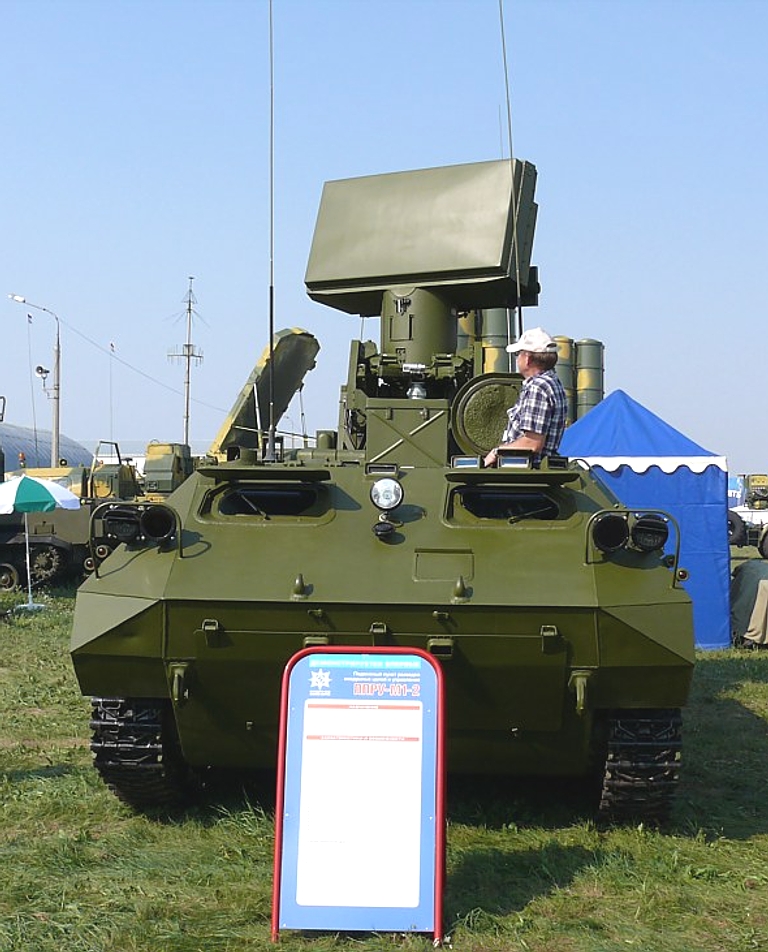
9S16 Flat
Box RF
Passive Detection System
The Flat Box series of sensors are designed to cue the 9A35M series TELARs to emitting enemy aircraft by exploiting radar emissions. The design uses a package of multiple antennas on the hull of the MT-LB and an additional antenna on the TELAR turret. To date sensitivity performance and band coverage have not been disclosed (all images © Miroslav Gyűrösi).
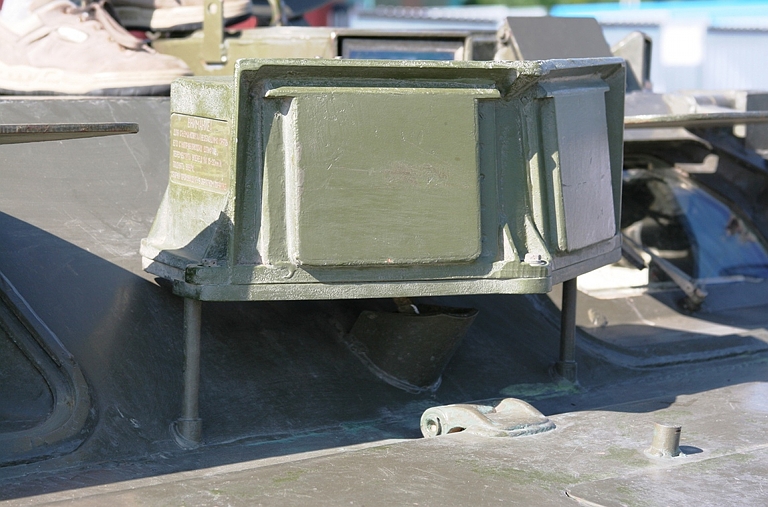
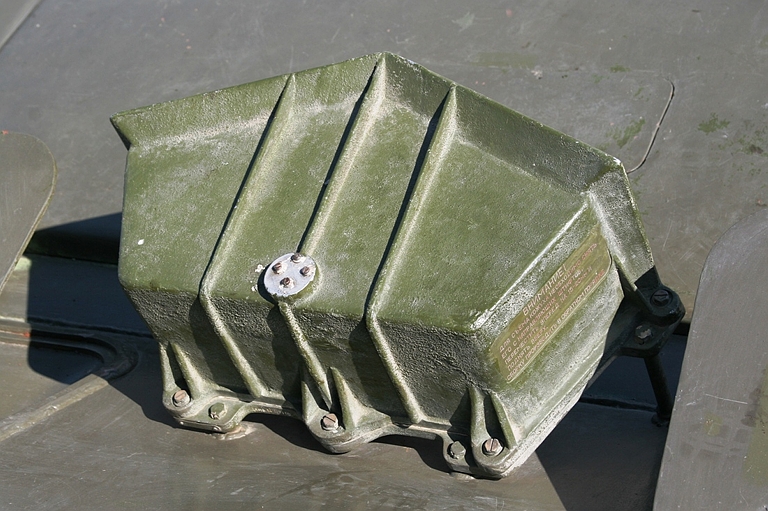

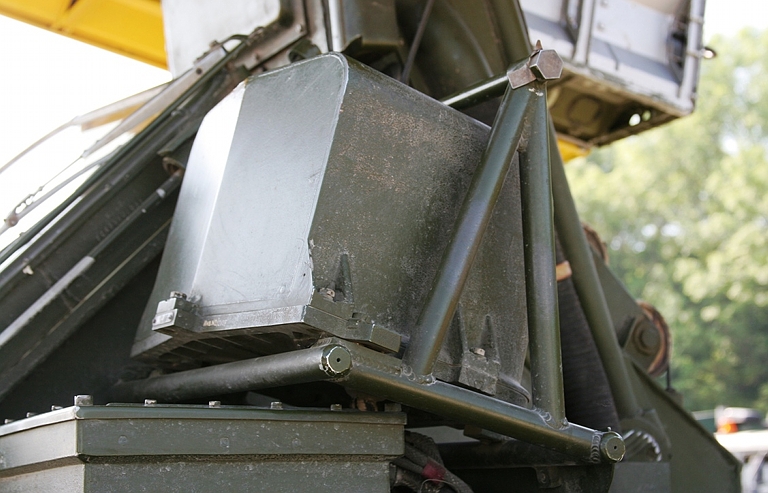

Operational Unit Imagery
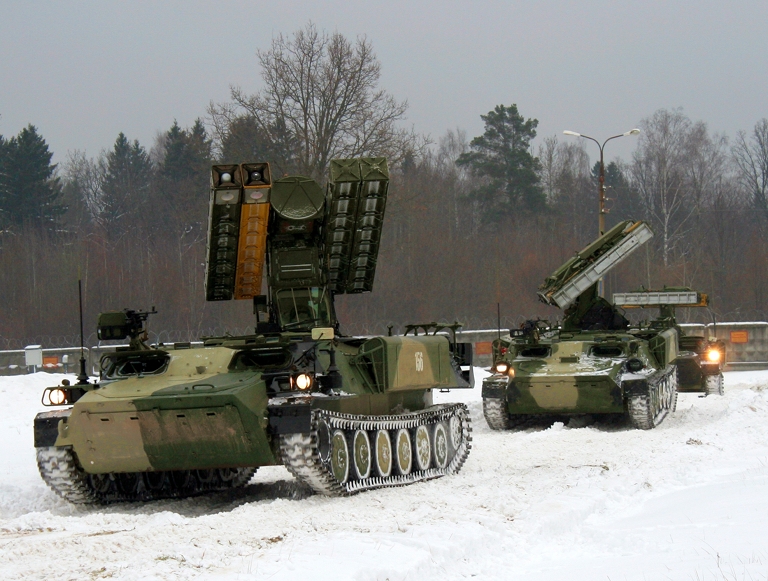

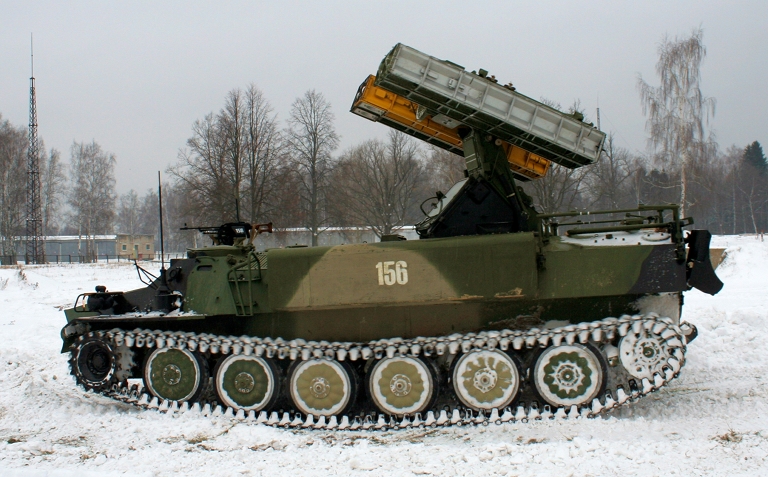
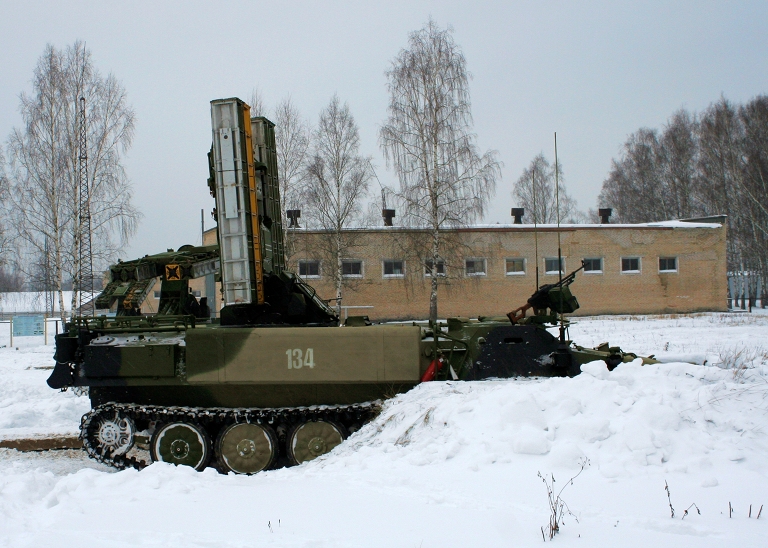

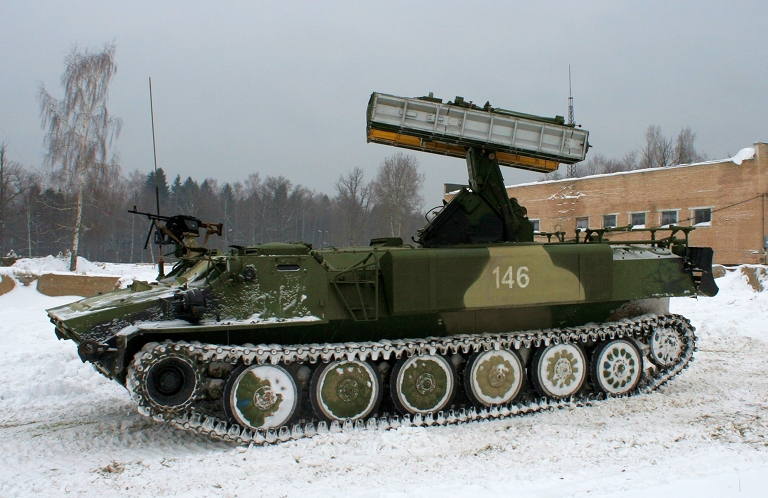
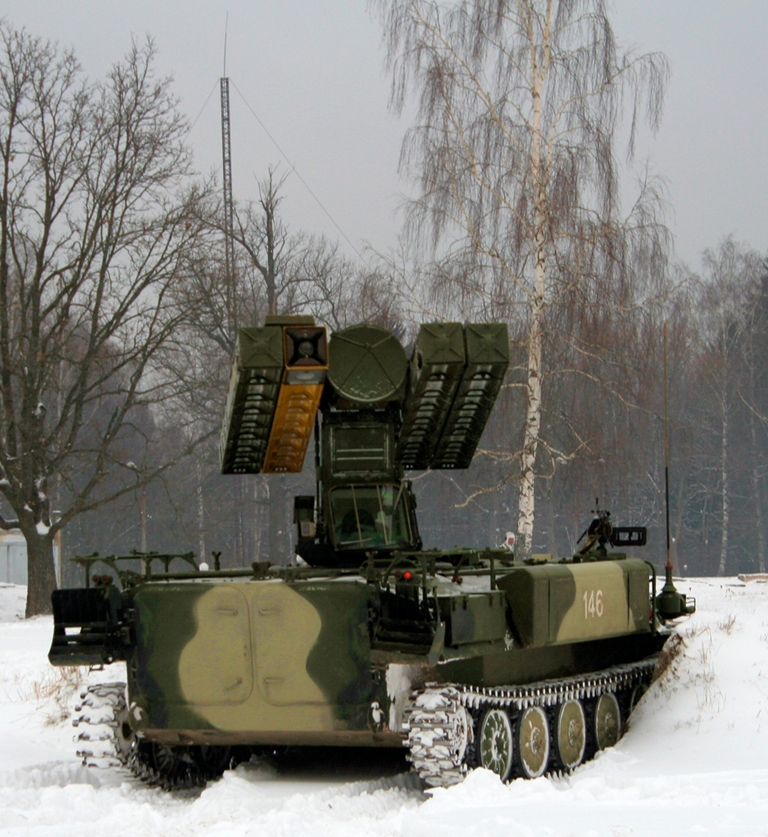
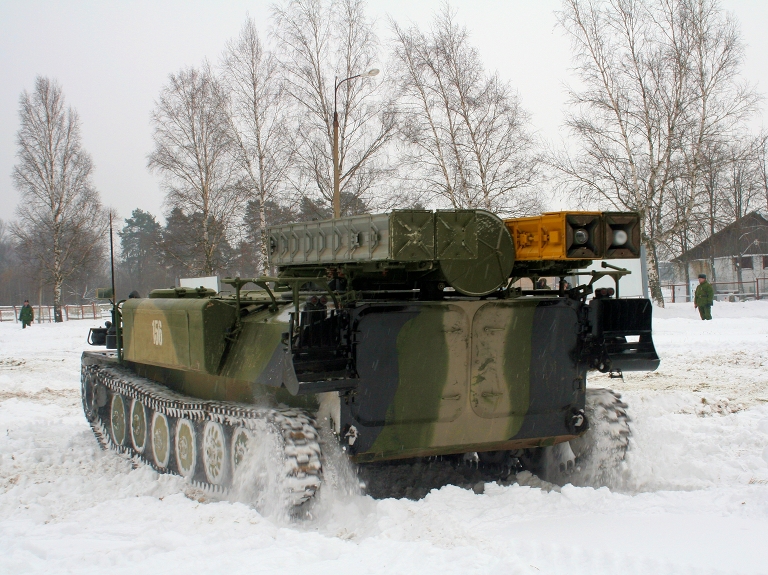

References/Sources
- Зенитный ракетный комплекс (модернизация ЗРК
“Стрела-10М”, “Стрела-10М2”, “Стрела-10М3”), URL: http://www.kbtochmash.ru/products/products_7.html
- Said Aminov, Vestnik PVO, URL: http://pvo.guns.ru
- Peter Skarus, Peter's ADA - Theorie und Grundlagen der Fla, URL: http://peters-ada.de/
- Ralf Wagner, Fla-Rakete 9K37M, Flak-11 Die Truppen-luftabwehr (TLA) der 11. MSD, URL: http://www.flak11.de/
- H. Kaiser, Raketen- und Waffentechnischer Dienst im Kdo. MB III, URL: http://www.rwd-mb3.de/
Technical Report APA-TR-2009-0801
|
|||||||||||||
![Sukhoi PAK-FA and Flanker Index Page [Click for more ...]](APA/flanker.png) |
![F-35 Joint Strike Fighter Index Page [Click for more ...]](APA/jsf.png) |
![Weapons Technology Index Page [Click for more ...]](APA/weps.png) |
![News and Media Related Material Index Page [Click for more ...]](APA/media.png) |
||||||||||
![Surface to Air Missile Systems / Integrated Air Defence Systems Index Page [Click for more ...]](APA/sams-iads.png) |
![Ballistic Missiles and Missile Defence Page [Click for more ...]](APA/msls-bmd.png) |
![Air Power and National Military Strategy Index Page [Click for more ...]](APA/strategy.png) |
![Military Aviation Historical Topics Index Page [Click for more ...]](APA/history.png)
|
![Information Warfare / Operations and Electronic Warfare Index Page [Click for more ...]](APA/iw.png) |
![Systems and Basic Technology Index Page [Click for more ...]](APA/technology.png) |
![Related Links Index Page [Click for more ...]](APA/links.png) |
|||||||
![Homepage of Australia's First Online Journal Covering Air Power Issues (ISSN 1832-2433) [Click for more ...]](APA/apa-analyses.png) |
|||||||||||||
| Artwork, graphic design, layout and text © 2004 - 2014 Carlo Kopp; Text © 2004 - 2014 Peter Goon; All rights reserved. Recommended browsers. Contact webmaster. Site navigation hints. Current hot topics. | |||||||||||||
|
Site Update
Status:
$Revision: 1.753 $
Site History: Notices
and
Updates / NLA Pandora Archive
|
|||||||||||||
|
|
Tweet | Follow @APA_Updates | |||||||||||
|
|
|||||||||||||
|
|
|||||||||||||
![F-111 Aardvark Index Page [Click for more ...]](APA/f-111.png)
![F/A-18 Hornet and Super Hornet Index Page [Click for more ...]](APA/fa-18a.png)
![Aerial Refuelling and Airlift Capabilities Index Page [Click for more ...]](APA/aar-lift.png)
![Directed Energy Weapons and Electromagnetic Bombs Index Page [Click for more ...]](APA/dew.png)
![Notices and Updates Index Page [Click for more ...]](APA/notices-128.png)
![APA NOTAM and Media Release Index Page [Click for more ...]](APA/notams-128.png)
![APA Research Activities and Policy / Technical Reports Index [Click for more ...]](APA/research-128.png)
![Search Air Power Australia Website [Click for more ...]](APA/search-128.png)
![Briefings and Submissions - Air Power Australia [Click for more ...]](APA/briefs-128.png)
![Air Power Australia Contacts [Click for more ...]](APA/contacts-128.png)
![Funding Air Power Australia [Click for more ...]](APA/funding-258.png)
